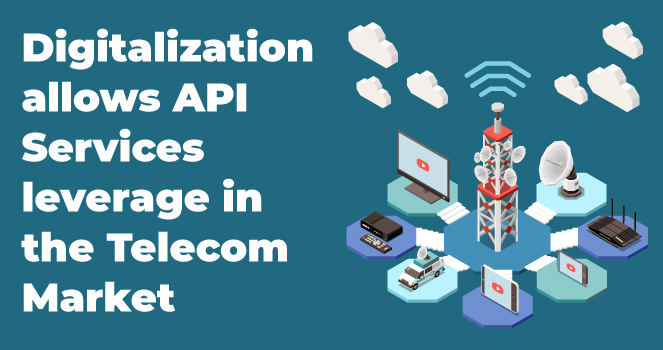



18, May 2022

Application programming interface – a computing connection enables developers to create services independent of the device, linking device’s resources and application. Over the years, the rapid technological advancements and surge in cloud-based adoption have amplified API demand among telecommunication operators. For instance, in 2021, WhatsApp launched a new cloud-based version that reduced API integration time. Such benefits have ultimately led to the expansion of the telecom API market over the past few years.
Given the technological developments, 4G LTE networks gained significant traction globally on account of rising mobile users. Since around 66% of mobile users have access to a 4G LTE network, network advancement is a major factor fuelling the market’s growth.
Our estimates indicate the global telecom API market to progress in revenue at a CAGR of 16.42% during the forecast period 2022-2028.
In the constantly evolving digital world, IoT and 5G technologies have encouraged prominent players like Ericsson, AT&T, Google, and Mozilla to collaborate for telephone services’ web browser integration. For instance, Google collaborated with AT&T to develop 5G edge computing solutions. In this regard, API provides innovative features, including recent contact history, SMS, and push-through notifications.
Additionally, to integrate API with automation systems, developers focus on the formation of vehicle-to-cloud to develop standardized sets of APIs. Estimates indicate that the Internet of Things API category is expected to observe the fastest growth over the forecast period.
In the Asia-Pacific, the telecom industry is expanding at a rapid pace, influencing the integration of application programming interfaces. As per industry sources, the revenue of mobile operators is estimated to surge, reaching approximately $230 billion by 2025. This expansion of the telecommunication industry is anticipated to elevate the adoption of innovative API solutions across major countries, especially India, China, South Korea, and Japan.
With the integration of 4G technology and API, communication services have advanced tremendously in North America. This has encouraged market players such as Twilio and Apigee Corporation to invest significantly in R&D. Such investment plans have soared API demand among numerous end-users. As per estimates, end-user spending on IoT solutions is anticipated to reach around $1.5 trillion by 2025 globally.
1. Messaging API: This segment captures the major share in the service category. Offered by third-party providers, messaging APIs provide access to worldwide carrier networks to enable SMS in conjunction with more modern chat APIs. This has eliminated the need to develop a back-end system as it is available as a service cloud model. As a result, various end-users adopt messaging API for bulk SMS services for marketing, tracking, and other purposes. Here, API integration with logistics platforms like Project44, Timocom, and others provides an easy connection to entire transport ecosystems.
2. Payment API: These APIs enable ecommerce sites to process credit cards and track orders while maintaining consumer lists. Digital payments have emerged crucial in various verticals, including BFSI, education, retail, manufacturing, and hospitality. According to a 2020 global survey, approximately 75% of banking APIs are used for internal purposes, with banks planning to double the number of APIs by 2025. Moreover, around 5% of banking APIs are used to generate revenue.
Considering the advent of new technologies, the telecommunications industry has transitioned from physical to digital networks. The release frequency has surged on account of the growing need to connect numerous applications. As a result, approximately 83% of specialists consider API integration essential for business processes. Hence, in retrospect, digitalization has compelled organizations to shift towards more open ecosystems, boosting the telecom API market growth.
An application programming interface is a computing interface that serves as a link between the device’s resources and application. APIs enable developers to create services independent of the device.
The global telecom API market attained $207.61 billion in 2021, and is estimated to garner $615.99 billion by 2028.

Prevalent cases of terrorist attacks in today’s world is increasing the need for severe standards of security for public safety, and the global market for biometric technology scrupulously accommoda..
Prevalent cases of terrorist attacks in today’s world is increasing the need for..